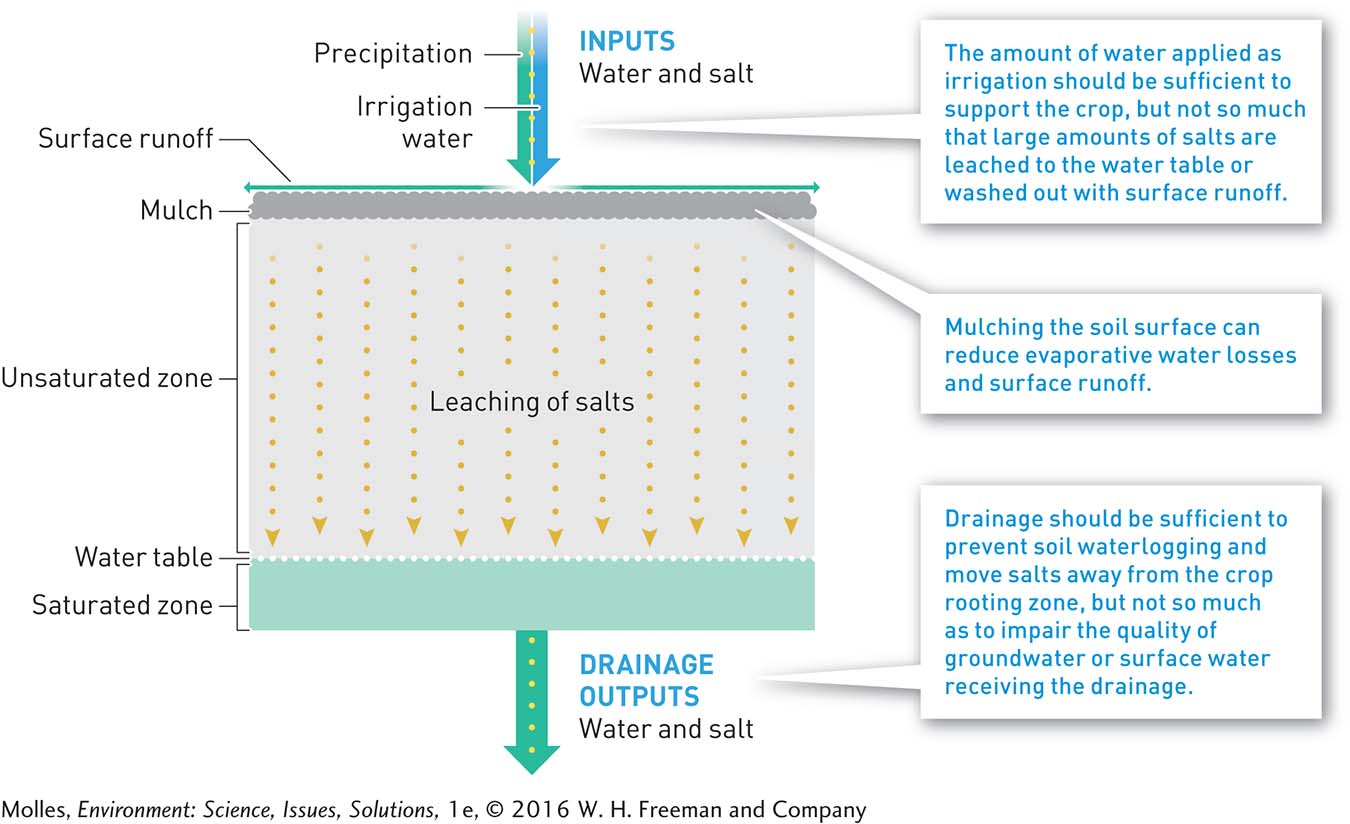7.12 Sustainable irrigation requires careful management of water and salts
Our food security depends on freshwater stored in manmade reservoirs, natural underground aquifers, and water transported across vast distances in aqueducts or other waterways. In 2010 approximately 43% of global cereal production (mainly wheat, rice, and maize) occurred on irrigated land. Without irrigation, production on these lands would decrease by nearly half, reducing global production of cereals by 20%. However, agricultural production is much more dependent on irrigation in some regions than in others. Southern Asia, for example, would lose an estimated 45% of cereal production, and Northern Africa, 66%. Europe, by contrast, receives enough regular rainfall that its cereal production would be unaffected. This means that food security over the long term will be achieved only if irrigation is sustainable, which requires careful management of water and salts.
Water Management
Efficient use of water is one of the most important elements of sustainable irrigation. Techniques to improve water use efficiency contribute to sustainable irrigation directly by reducing withdrawals from groundwater or surface water. For example, careful leveling and sloping of fields watered by flood irrigation (see Figure 7.21a, page 205) increase the uniformity of irrigation, thereby decreasing the amount of water needed to achieve high levels of crop production. Delivering just the right amount of water to the rooting zone of growing crop plants with a precision technique such as drip irrigation (see Figure 7.21c, page 205) can save even more water.
mulch A natural or synthetic covering to the soil surface that conserves moisture, reduces soil temperature variation, and decreases growth of weeds.
More efficient water use can also be achieved by reducing water losses from crops and the soil surface. One way to decrease evaporative water losses is to cover the soil surface with mulch, a natural or synthetic covering to the soil surface that conserves moisture, reduces soil temperature variation, and decreases the growth of weeds.
Salt Management
Salts are added to soil with every drop of irrigation water. This means farmers must ensure that soils are well drained in order to avoid raising the water table, which causes waterlogging and salinization (see Figure 7.22, page 205). Using highly efficient irrigation systems to deliver just the amount of water needed to sustain agricultural production, while not producing excessive saline drainage water, can reduce the salts exported to groundwater and surface water (Figure 7.43).

Think About It
What practices can reduce the incidence of waterlogged soils in irrigated landscapes?
How could irrigating only when a crop needs water reduce the amount of drainage water that needs to be managed?
Development of the Colorado River Basin (see Figure 6.11, page 166) included converting approximately 1 million hectares (2.5 million acres) of land in the basin to irrigated agriculture. A significant rise in the salinity of Colorado River water, particularly downriver near Mexico, has been linked to this development. Explain the link between these events.